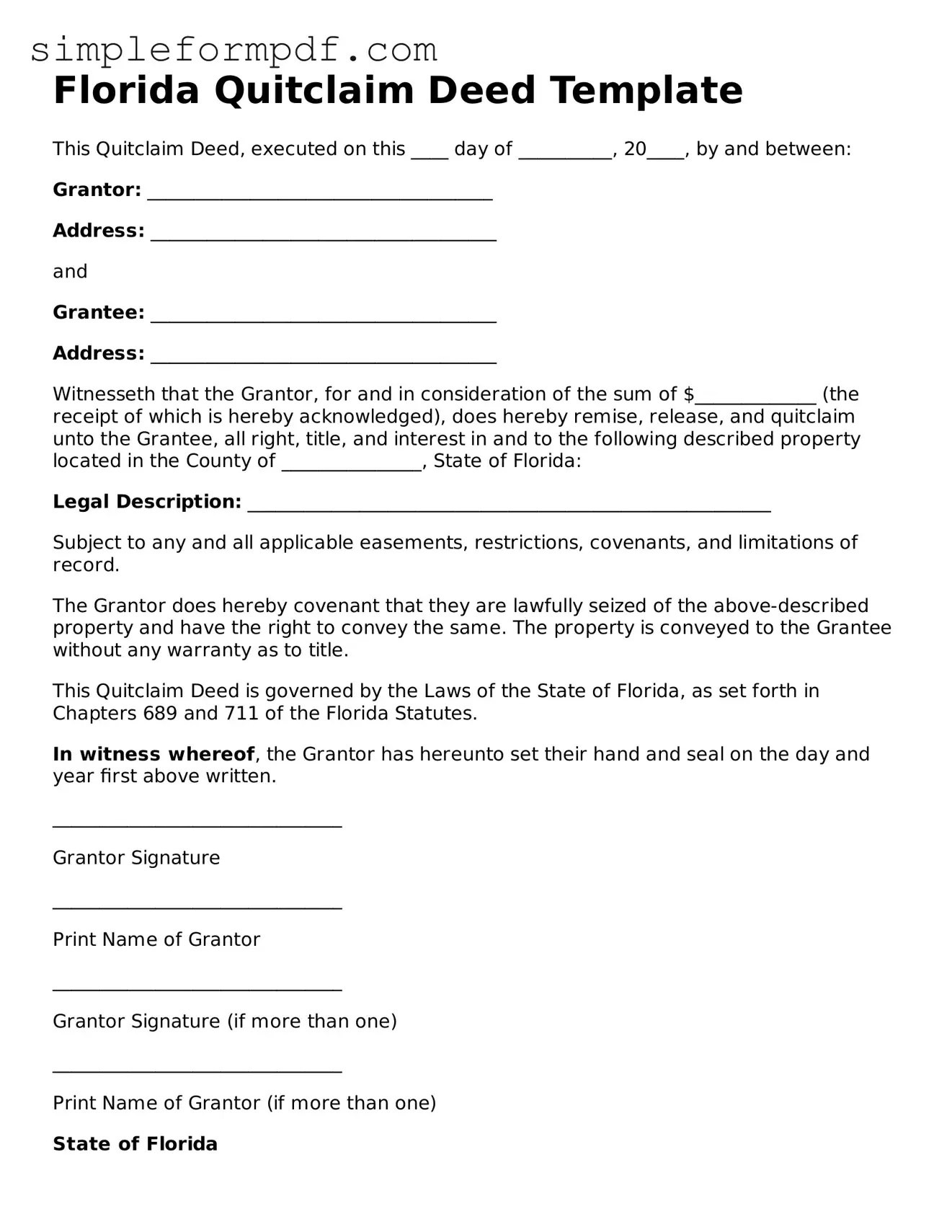Florida Quitclaim Deed Template
This Quitclaim Deed, executed on this ____ day of __________, 20____, by and between:
Grantor: _____________________________________
Address: _____________________________________
and
Grantee: _____________________________________
Address: _____________________________________
Witnesseth that the Grantor, for and in consideration of the sum of $_____________ (the receipt of which is hereby acknowledged), does hereby remise, release, and quitclaim unto the Grantee, all right, title, and interest in and to the following described property located in the County of _______________, State of Florida:
Legal Description: ________________________________________________________
Subject to any and all applicable easements, restrictions, covenants, and limitations of record.
The Grantor does hereby covenant that they are lawfully seized of the above-described property and have the right to convey the same. The property is conveyed to the Grantee without any warranty as to title.
This Quitclaim Deed is governed by the Laws of the State of Florida, as set forth in Chapters 689 and 711 of the Florida Statutes.
In witness whereof, the Grantor has hereunto set their hand and seal on the day and year first above written.
_______________________________
Grantor Signature
_______________________________
Print Name of Grantor
_______________________________
Grantor Signature (if more than one)
_______________________________
Print Name of Grantor (if more than one)
State of Florida
County of ________________
Before me, the undersigned authority, personally appeared ___________________________, who is personally known to me or who has produced _______________________ as identification, and who did take an oath. This person is the Grantor named in this Quitclaim Deed.
WITNESS my hand and official seal this ____ day of __________, 20____.
_______________________________
Notary Public
My Commission Expires: _______________
